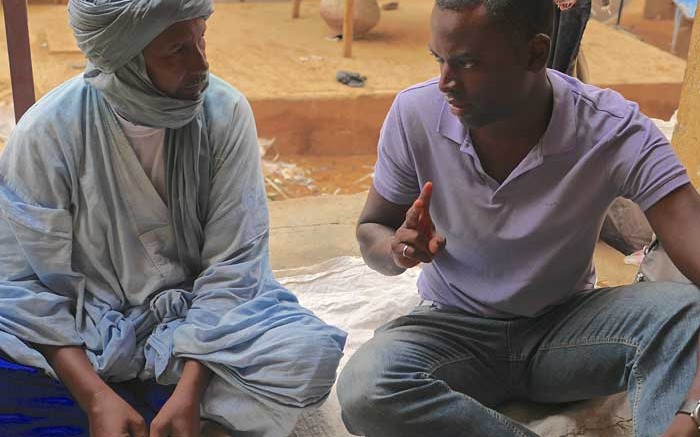VANCOUVER — West African focused junior Great Quest Metals (TSXV: GQ; US-OTC: GQMLF) had a tough year in 2013, as the coup d’état in Mali brought uncertainty around the company’s flagship Tilemsi phosphate project, 120 km north of the city of Gao. But after a ceasefire in June and the election of former prime minister Ibrahim Boubacar Keita as Mali’s new president, Great Quest appears ready to restart prefeasibility activities at Tilemsi in a bid to meet West Africa’s rising fertilizer demand.
According to a market study Great Quest completed in 2013, West Africa’s phosphate (P2O5) fertilizer demand is expected to increase by 134% over the next 15 years to 430,000 tonnes. Members of the Economic Community of West African States signing up to the World Health Organization’s Abuja Declaration to increase fertilizer use to 50 kilograms per hectare from current levels of less than two kilograms per hectare.
The company aims to tap into growing regional demand by producing local phosphate product that is suitable as a direct-application fertilizer or as a component of blended NPK fertilizers at a price that can displace costly imports.
In late November Great Quest outlined a joint research project with Mali’s Rural Economics Institute (IER), wherein demonstration crops using Tilemsi’s enriched and granulated direct application phosphate fertilizer were planted for harvest and analysis in December and January.
A total of 27 agronomic trials were conducted in the five major agro-ecological climatic regions of Mali, where large-scale commercial agriculture occurs. Crops included: cotton, corn, rice (irrigated, upland and lowland varieties), millet, sorghum and peanuts.
Tilemsi’s phosphate was prepared in six different formulations for the study, which were blended with nitrogen and potash (as KCl) to form a complex NPK fertilizer, which was compared to blends using chemical phosphate (mono-ammonium phosphate) and unimproved Tilemsi phosphate (powder) available in the Malian market.
On Feb. 18 Great Quest qualified its product demonstration as an “overwhelming success,” with its direct-application fertilizer proving an effective replacement for much costlier imported chemical phosphate across the full range of crops and regions.
The company expected that the commonly used chemical NPK blends would outperform its newly blended Tilemsi fertilizers, but in many cases the Tilemsi blends were an improvement over the chemical fertilizer, and in several cases Tilemsi’s natural powder performed in line with the chemical fertilizer.
Corn crops in Mali’s Sikasso region demonstrated that Great Quest’s enriched blends resulted in higher crop yields of up to 3,858 kilograms per hectare compared to diammonium phosphate blends of 2,156 kilograms per hectare. Tilemsi fertilizer yields jumped to 4,098 kilogram per hectare when solubility agents were added. Similarly, rain-watered rice crops from the Bamako region showed yields up to 2,224 kilograms per hectare compared with 1,751 kilograms per hectare for the diammonium-phosphate blends.
“In the field, many of the participants noted that plants using the Great Quest formulations retained their green colour longer than the other plants, indicating a good use of soil, water and nutrients. All those who attended agreed this product should be made available as quickly as possible,” commented project coordinator Lamine Traoré of the IER during the trials.
In February 2013 Great Quest filed a preliminary economic asssessment (PEA) on Tilemsi that contemplated the construction of phosphate beneficiation and granulation plants and associated infrastructure. Test work was completed to prove saleable products, including high-grade phosphate raw material for NPK blending facilities and medium grade for low-cost direct application fertilizer. The study also looked at building four NPK blending plants in West Africa.
Great Quest’s mine plan focuses on inferred resources of 50 million tonnes grading 24.3% P2O5. Production would start up at 200,000 tonnes phosphate per year and ramp up to 1 million tonnes per annum by the eighth year of production. Great Quest’s operation would carry US$157 million in construction costs, and generate a US$649-million net present value and 33% internal rate of return over a 20-year mine life.
Great Quest shares have traded within a 52-week range of 45¢ to $2.54, and have soared 208% over the first eight weeks of 2014, en route to $1.98 at press time. Great Quest has 47 million shares outstanding for a $94-million market capitalization.
In late December the company completed a $500,000 private placement by issuing 850,000 units at 60¢ per unit.


Be the first to comment on "Great Quest gets back on track at Tilemsi"